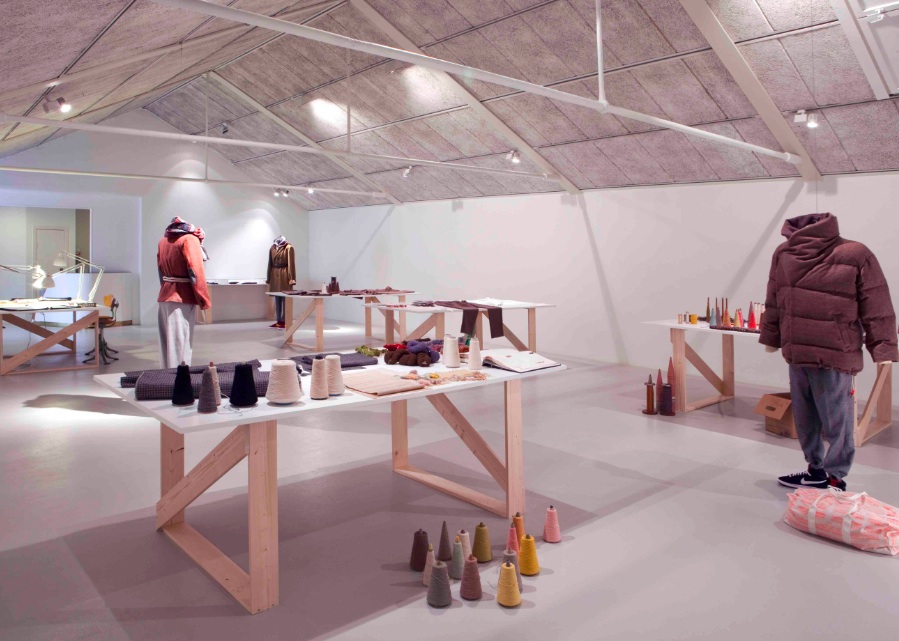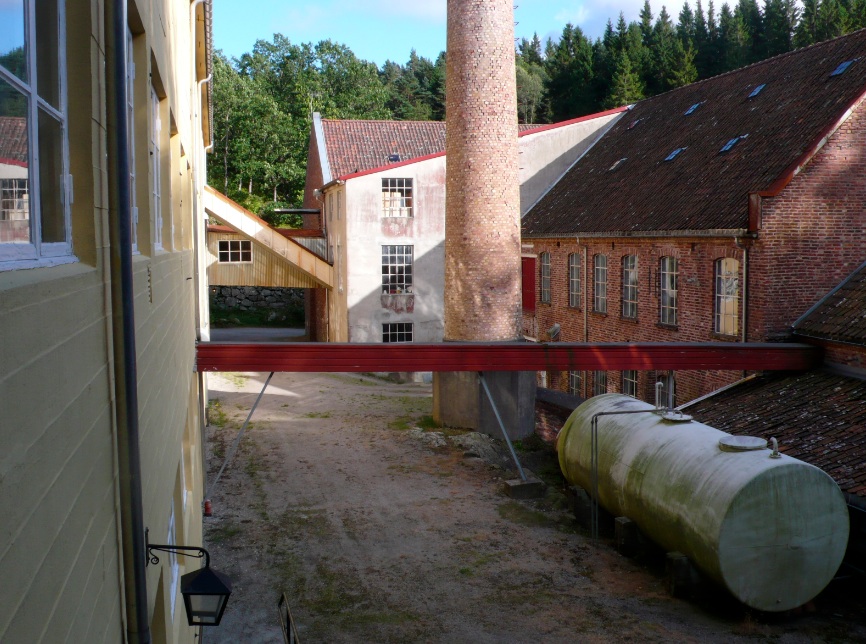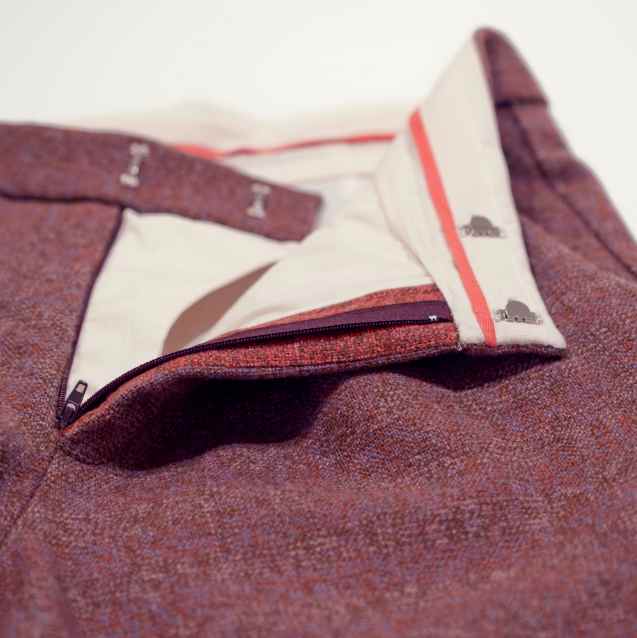On Kunsthåndverk: An Interview with Franz Schmidt and Charlotte Bik Bandlien
/Mae Colburn: How would you explain the word kunsthåndverk in English?
Franz Schmidt: It’s the Norwegian term for the crafts area. Kunsthåndverk: arts and crafts. ‘Articraft,’ directly translated.
Charlotte Bik Bandlien: It’s articraft versus artifact.
Schmidt and Bandlien presented an interesting play on words, especially in light of the fact that the Norwegian word artig – which to my American ears sounds exactly like ‘arti’ – translates to ‘fun’ in Norwegian (a witty, though perhaps trivial connection).
I met artist Franz Schmidt and anthropologist Charlotte Bik Bandlien at a café on a busy street corner in Oslo several weeks back with the goal of formulating a loose English definition of the Norwegian term kunsthåndverk. Schmidt, who describes himself as a kunsthåndverker, is perhaps best known throughout Norway for his work at Sjolingstad Woolen Mills, where he reproduced a series of archival textile samples. His work is part of what appears to be a renewed interest in industrial textile production in Norway’s largely post-industrial landscape. Bandlien is an anthropologist with a specialization in material culture. Together, Schmidt, Bandlien, and I explored the contours of art, craft, and the textile industry within the context of Schmidt’s work.
MC: Could you provide a brief description of your background, Franz?
FS: I’m educated as a men’s tailor here in Oslo and I worked with costumes for two years before I applied to the Oslo National Academy of The Arts, where I studied one year at the fashion and costume department and then transferred to the textile department. I started weaving quite late [in my studies] on a handloom, but I decided that I didn’t want to leave the school without knowing a craft, so I continued.
MC: How did you become involved with the mill?
FS: I was supposed to work with a small mill that was operating here in Oslo just after I finished my education and I went to Sjolingstad to get the basic information that I needed to run the mill here [in Oslo]. I fell in love with the place and ended up staying for two years. The last project I did there was called Rekonstruksjoner in Norwegian – Reconstructions. I reproduced material originally produced at Sjolingstad in the 1930s and, in collaboration with designer Siv So Hee Stenaa, made contemporary garments. I found the original sample books in the archives at Sjolingstad and spent quite a long time studying the quality of the threads and the technical aspects to be able to produce them again.
MC: Could you describe the way the factory looks, feels, the colors, noises, smells.
FS: It’s situated in a valley just outside Mandal, as far down as you can go in Norway. There were only two farms there before the man that started the business in 1894 decided that he wanted to build a mill. It became a village with a shop and a post office and of course the electricity for the mill was possible because of the river that ran through the valley. It’s quite a beautiful old brick building and you can find the original looms and technical equipment from as far back as 1910. It’s now partly a museum and partly a small commercial business. Because they are a museum, they have the responsibility to maintain the machines and the original atmosphere at the mill, but they also need to produce to generate some income. Because they can’t replace old machinery, it’s a matter of finding the right balance between using and preserving the machinery [that is there]. That would destroy the museum.
MC: From what I understand you worked specifically with a mechanized Italian loom dating from the early 20th century. What’s it like to work on a piece of machinery like that?
FS: You have to be very – tentative. That’s perhaps not the right word, but it’s a personal relationship. [The machine] has an individual voice. It has a soul, so it’s a kind of friendship. That’s the easiest way to describe it.
CBB: You could also describe how you feared it wouldn’t work out…
FS: That’s true. I used that loom to make cloth for a suit, thinner than the regular quality they make at Sjolingstad, and that specific loom hadn’t been used to make [suiting] for a long time. The yarn was quite thin and I was worried that the loom would be too tough, but when I started working on it, it was – and this is what Charlotte was talking about – it was like a homecoming for the machine because it is actually meant to handle that quality of yarn. Every worry I had evaporated.
MC: This is a good segue into something that I’d like to ask both of you about. Considering the largely deindustrialized nature of the Norwegian landscape, how does the industrial equipment at Sjolingstad fit into the context of contemporary textile production?
CBB: I think it’s interesting how the whole sphere of handicraft has been expanded to involve this sort of small-scale old-fashioned industry. It’s all becoming part of [a set of] alternatives to industrial production. What we’ve seen is a movement from a semiotic approach towards material culture to a reorientation towards materiality itself. We currently relate to fabrics and clothing mainly as symbolic exchangeable fast fashion. Now, due to "symbolic inflation," we need new strategies to uphold social distinction, to be exclusive, and that’s why we see this reorientation toward materiality. It’s linked to an article by Alfred Gell called The Technology of Enchantment and the Enchantment of Technology, which is about this kind of dynamic: the thrill related to skill and knowledge of machinery adds value to objects. […] What’s interesting about Franz’ work is the notion of the archive; he has these small knowledge hubs, the type of knowledge that is currently being revalued.
MC: Because this is an oral interview, I’m curious whether you could provide verbal descriptions of the textile reconstructions you’ve produced. As Charlotte mentioned, it’s a knowledge hub that you’ve worked quite hard to cultivate.
FS: The fabric that I reconstructed was quite a coarse fabric. It’s hard, stiff; it’s not very soft. It was meant to last for a lifetime. I can easily visualize a young man buying a suit and thinking to himself ‘Now I have this suit for my entire life.’ I find it quite interesting to work with [historical] materials because it says something about the time and about how our perspective has changed.
CBB: Historically, Norwegian wool was considered too fine and now it’s considered too coarse because what we consider our ‘ideal’ material and tactile experience has changed. A return to longer-lasting material is obviously a new tendency; durable, unique, environmentally sound materials are now really the only option in producing distinction and exclusiveness.
FS: […] I think it’s time for my area. Everything we’ve been talking about now is part of the discussion. You have a scale. It’s like stages in a continuum. You have brukskunst, which is the closest to industrial production, and that overlaps with areas of the kunsthåndverk field, which is more – as you say – small-scale unique one-off pieces. And then that overlaps with design and fine art. But we’re all using similar tools.
Mae Colburn is an independent textile researcher and writer and professional seamstress based in Santa Fe, New Mexico.
Franz Schmidt is a textile artist and chair of the board of Oslo’s Format gallery, a space owned by the Norwegian Association of Arts and Crafts and devoted exclusively to developing the craft sector in Norway. A recipient of the 2006 Kunsthåndverk prize, Franz begin the The Norwegian Artistic Research Fellowship Program this coming fall.
Charlotte Bik Bandlien is an Oslo-based anthropologist with a focus on material culture. Her thesis examined the notion of ‘retro’ and she has a background in both visual communication and trend analysis. Bandlien is a contributing editor to Personae, a Norwegian fashion journal. She currently teaches design theory at Oslo National Academy of the Arts.








